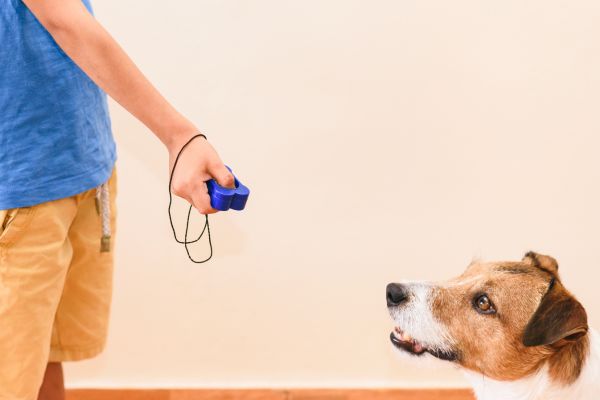What Is Positive Reinforcement Training?
Let’s be real, training a pet can feel overwhelming at times. Between the chewed shoes, endless barking, or the cat that simply refuses to listen, you might wonder if there’s an effective way to teach good behavior without feeling like the “bad guy.” That’s where positive reinforcement training comes in.
At its core, positive reinforcement training is about rewarding the behavior you want to see more often. Instead of focusing on punishment when pets mess up, this method flips the script: reward the good stuff, and the bad stuff naturally fades away. It’s one of the most humane, science-backed approaches to pet training, and it works on dogs, cats, birds—you name it.
Why Positive Reinforcement Training Works
The thing is, animals (just like humans) repeat behaviors that get them something good. When your dog sits on command and gets a tasty treat, his brain basically lights up with a “yes, that worked!” signal. Over time, that simple connection turns into a reliable habit.
Unlike punishment-based methods, which can lead to fear or anxiety, positive reinforcement builds trust. Your pet learns to associate you with good experiences, which strengthens your bond. And honestly, who doesn’t want a happy, confident pet that actually enjoys training?
The Basics of Getting Started
So, how do you actually put positive reinforcement training into practice? It’s simpler than it sounds. First, identify a reward your pet finds irresistible. For most dogs, it’s food treats. For cats, maybe it’s a feather toy. Some pets even respond best to praise or belly rubs.
Once you’ve got the reward, start small. Ask for a basic behavior—like “sit”—and reward it the moment it happens. Timing is everything. If the treat or praise comes too late, your pet might not connect the dots. A clicker can help mark the exact moment your pet gets it right, but your voice works too.
Consistency Is Key
Here’s the thing: you can’t just reward sometimes and expect your pet to understand. Consistency is what makes positive reinforcement training stick. Every time your pet performs the desired action, they need to know a reward is coming. Over time, once the behavior is solid, you can reduce the frequency of rewards, but in the beginning, you’ve got to be steady.
Consistency also applies to everyone in the household. If one person rewards the dog for jumping on the couch while another scolds him, you’re sending mixed messages. Sit down with your family, agree on the rules, and stick to them.
Common Mistakes to Avoid
Even though positive reinforcement training is straightforward, there are a few traps pet owners fall into. One big mistake is accidentally rewarding unwanted behavior. For example, if your dog barks for attention and you eventually give in, guess what? You just reinforced the barking.
Another mistake is expecting overnight results. Training takes time, patience, and a little creativity. If one approach isn’t working, don’t give up. Adjust the reward, simplify the command, or break the behavior down into smaller steps.
Beyond Food Rewards
You might be wondering, “Do I really have to carry treats around forever?” The short answer is no. Food is often the fastest way to teach a new behavior, but once it’s learned, you can mix in other rewards. Dogs especially love praise, playtime, or even just your attention.
Think about it this way: every pet has their own “currency.” For one, it might be cheese cubes. For another, it could be a game of tug-of-war. The more you understand what lights your pet up, the easier it becomes to keep training fun and engaging.
Positive Reinforcement for Problem Behaviors
One of the coolest things about this method is how well it works for redirecting problem behaviors. Take jumping, for example. Instead of scolding your dog for leaping up, teach them that sitting calmly earns attention and rewards. Pretty soon, the unwanted behavior gets replaced with something better.
The same goes for leash pulling, excessive meowing, or even chewing. By focusing on what you do want, and rewarding it consistently, you shift the energy away from frustration and into progress.
The Long-Term Benefits
Positive reinforcement training doesn’t just teach tricks. It lays the foundation for a strong, trusting relationship between you and your pet. Training becomes less about “control” and more about communication. Your pet learns that listening to you makes good things happen, which motivates them to keep trying.
Over time, you’ll notice your pet isn’t just behaving better—they’re more relaxed, more confident, and more eager to engage with you. And let’s be honest, that makes life easier for both of you.
Final Thoughts
At the end of the day, positive reinforcement training is about creating a partnership with your pet. It’s not about dominance or fear—it’s about teaching through kindness, patience, and consistency. Sure, it takes effort, and yes, there will be setbacks. But the payoff? A pet that trusts you, listens to you, and loves learning with you.
So grab those treats, keep your sense of humor, and remember: training isn’t just about shaping behavior—it’s about strengthening the bond you share. And that’s something both you and your pet will benefit from for years to come.

